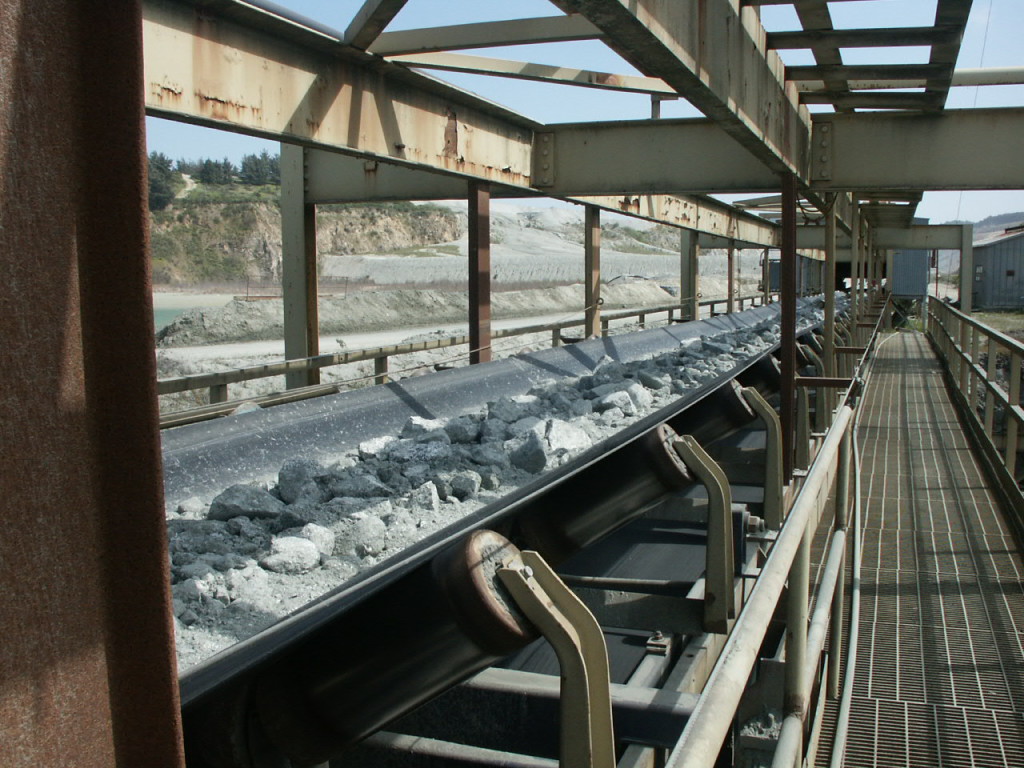
Conveyor Belt Scales, more commonly known as Belt Scales, are used to weigh materials while being carried on conveyor belts. Since it is inefficient, labor intensive and not always possible to remove the material from a conveyor belt, weigh the material, and then put the material back on the conveyor, the most efficient and cost-effective weighing solution is utilizing a conveyor belt scale.
Belt scales are engineered to be installed on the conveyor belt. The modular designs and a broad range of options and equipment make belt scales viable in outdoor, indoor and warehouse settings. They accurately weigh a great variety of products ranging from packaged food products to bulky aggregate materials.
Below are four reasons for your business to consider purchasing a conveyor belt scale:
- The weighing occurs as goods pass along regular channels of transportation without interrupting the process line.
- Conveyor belt scales are available with special features adaptable to your weighing requirements. Besides straight weighing, other features include checkweighing, memory access and weight accumulation. Your scale provider can also develop customized weighing features particular to your business requirements.
- Conveyor belt scales are built with specifications for a variety of environments. Belt scales are suitable in harsh environments, such as aggregate materials as well sanitary environments, such as food service.
- Conveyor belt scales deliver highly reliable and accurate results while keeping your production line moving.
After you decide the savings of time and increased efficiency is worth the investment in a conveyor belt scale, you will need to determine which belt scale is best for your business. The following information will help in your decision-making process. Contact your scale provider for additional information.
Two types of Conveyor Belt Scales
- Single Idler
Single idler scales are the most cost effective belt scales and are used for tracking inventory of inexpensive products where the weigh bridge is limited. These are the most commonly used belt scales and are popular on portable equipment. - Multi Idler
When weighing higher value products, multi idler belt scales are generally preferred. The variants available include dual, triple and quad, and with every increase in the number of idler scales, there is a proportionate increase in the weigh bridge size and accuracy. The products spend more time on the weigh bridge, which gives more information for review and analysis.Multi idler scales are used for faster moving conveyor belts where accurate sampling of the conveyor belt is extremely critical. The belt of a multi idler scale can move much faster than the single idler scale while providing very accurate weights.
More Things to Consider Before Purchasing a Conveyor Belt Scale
The success your business gains from a conveyor belt scale depends how the scale handles your operating needs and conditions. Apart from the type of conveyor scale idler, think about these 5 aspects before you make your purchase:
- Operating Environment: It is wise to select a belt scale suitable to your operating environment. A scale unable to withstand the environment could result in frequent break-downs. Repairs cost your business money as well as time lost while the scale is out-of-service. Stainless-steel conveyor scales are ideal if you plan on frequent cleaning, sanitizing with chemicals or are using a high-pressure wash-down procedure.
- Products on the Conveyor: Belt scales can handle a variety of products, so another essential consideration is the type of products you will weigh, their shape and how they’re packaged. The weight of the individual items being weighed and the maximum weight you will be weighing at any given time are also key components to selecting your belt scale. Keep in mind food products will most likely require conveyor systems manufactured to specific sanitary specifications.
- Division Sizes Required: The division size is primarily dictated by products you are weighing, but regulations and industry standards might require a basic minimum. Divisions are the increment by which a scale increases or decreases when weighing a product/item. Some applications might have enough leeway to allow for large divisions of a couple pounds, while more precise applications may require divisions as small as a tenth of a gram. When selecting the division of your scale, it’s usually best to err on the side of caution and select a scale with a smaller division.
- Throughput: To get the most out of your belt scale, you must accurately estimate the number of products moving over the scale in a given time and select a system that is capable of handling that amount of product.
You should also assess the distance between each individual product on the conveyor, the speed at which the products need to move, and perhaps even consider future plans of increasing production and how increased production will affect the system. - Legal-For-Trade Measurements: Along with the operational requirements, you need to determine if your products require Legal-for-Trade weights. Legal-for-Trade conveyor belt scales will be pricey and there are a limited number of manufacturers offering these scales. For more information, consult your scale provider for Legal-for-Trade conveyor belt scales. (Any U.S. business that buys, sells or charges based upon weight must use a “Legal for Trade” scale. Legal for trade scales are tested and sealed by government agencies insuring the scale’s legal accuracy.)
Contact Quality Scales Unlimited to get more information and pricing of conveyor belt scales. Our team can help you select, install and calibrate industrial weighing scale for you.




